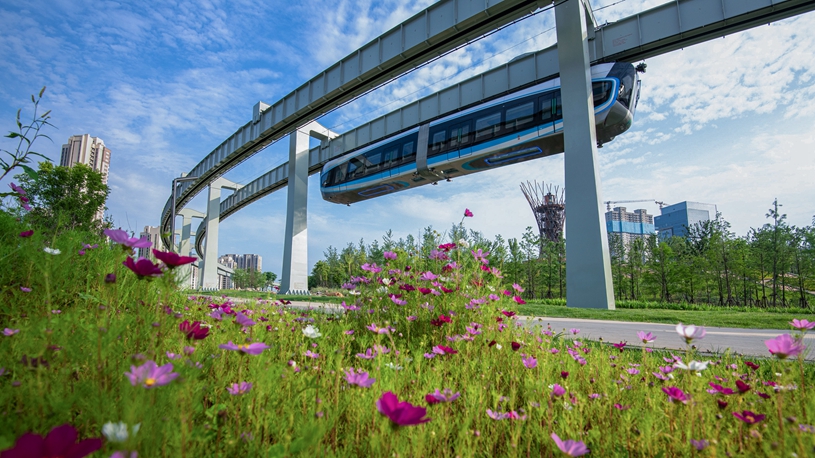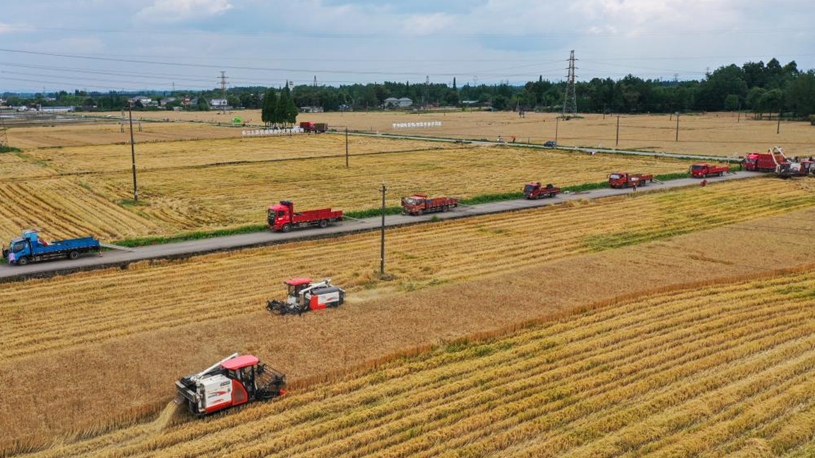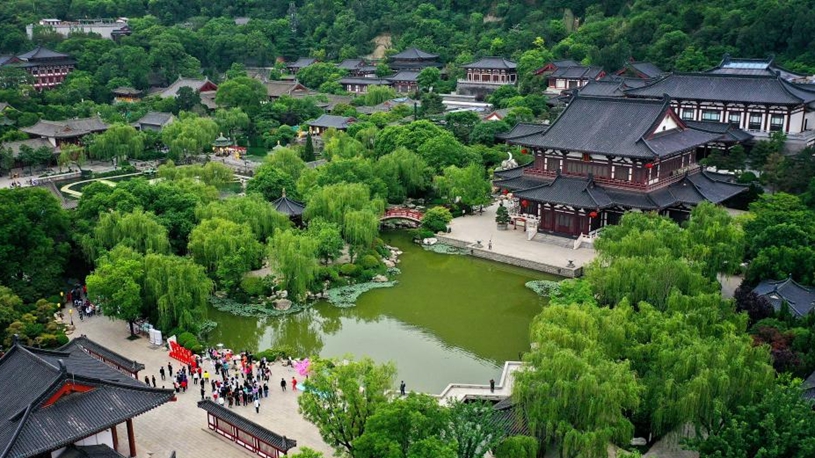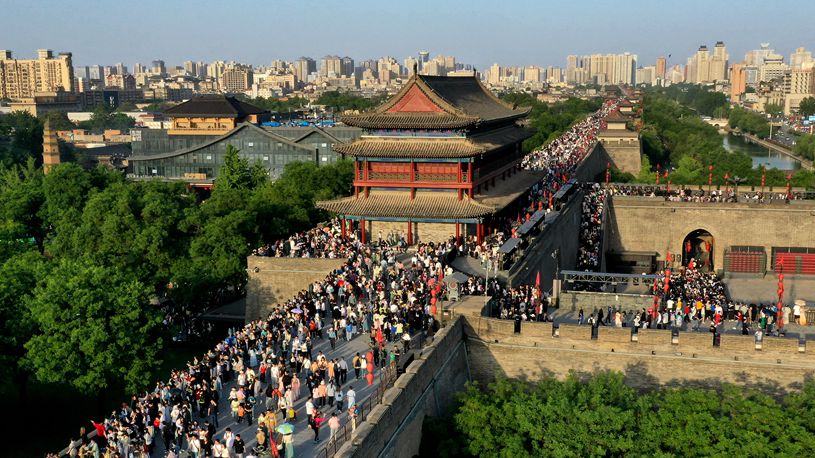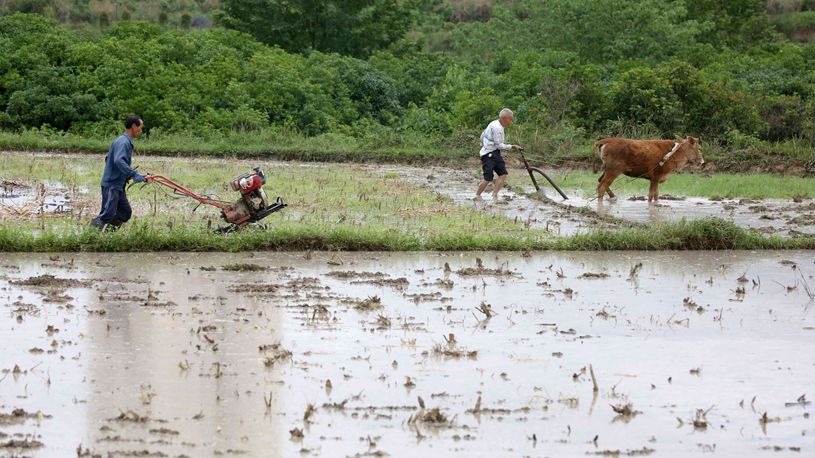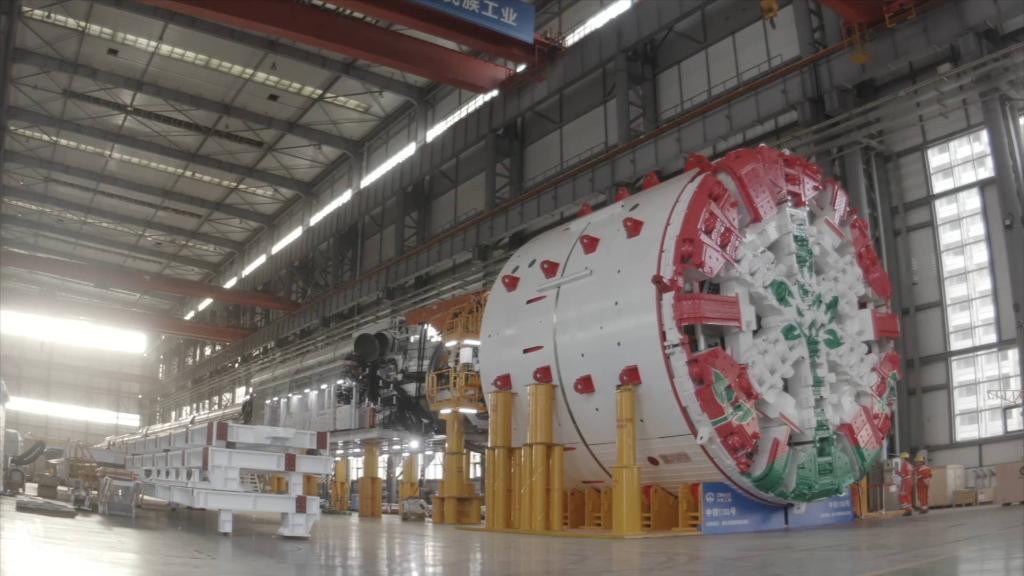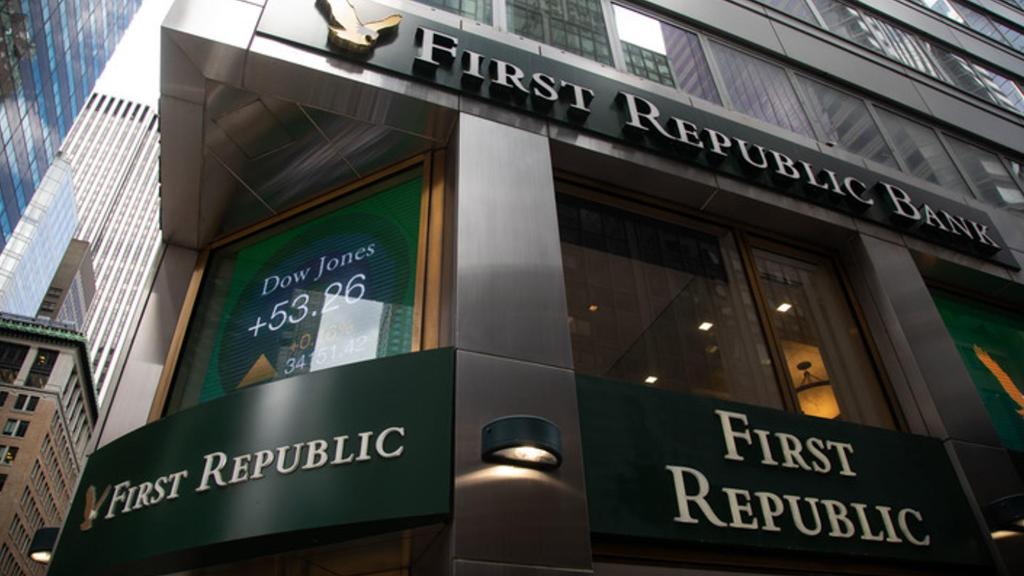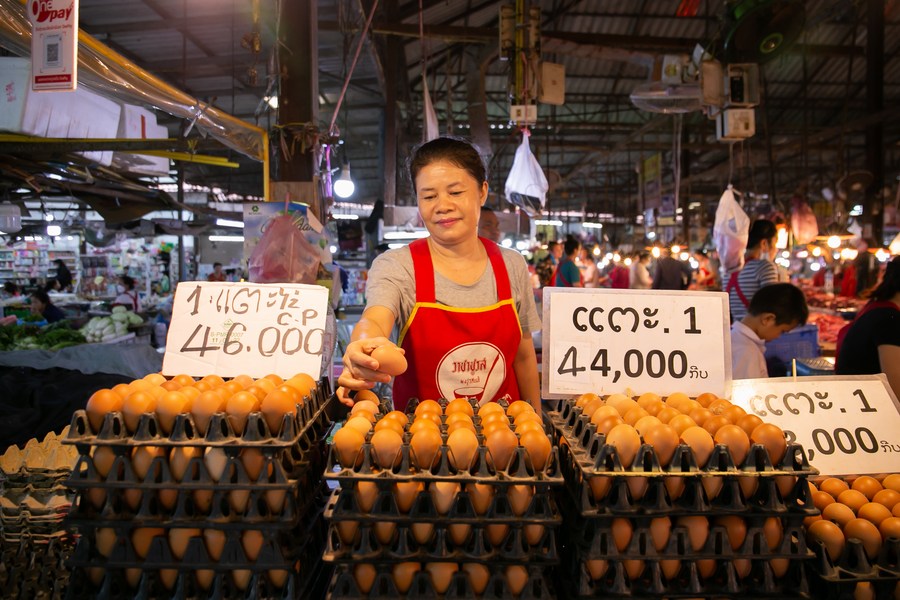
Photo taken June 9, 2022 shows a market in Vientiane, Laos. (Photo by Kaikeo Saiyasane/Xinhua)
Inflation in Laos has increased significantly since the beginning of 2022, with rising prices continuing to inflict hardship on people struggling to earn a living.
VIENTIANE, May 12 (Xinhua) -- The continuing depreciation of the kip has affected people's daily life in Laos, with the cost of living continuing to rise due to increasing prices of basic commodities, especially food items.
Somchit, a private company employee in Lao capital Vientiane, told Xinhua on Wednesday that he is having a very difficult time managing his everyday living expenses.
"As most products are imported, the rising cost of goods and services was mainly driven by the depreciation of the kip. Everything on the market is incredibly expensive right now," said Somchit.
"I have to take my lunch from home along with a drink every day, to lower my cost of living," he told Xinhua.
Laos' inflation rate dropped slightly to 39.89 percent in April from 40.97 percent in March, but food prices remained elevated in the country, according to the latest report issued by the Lao Statistics Bureau last Friday.
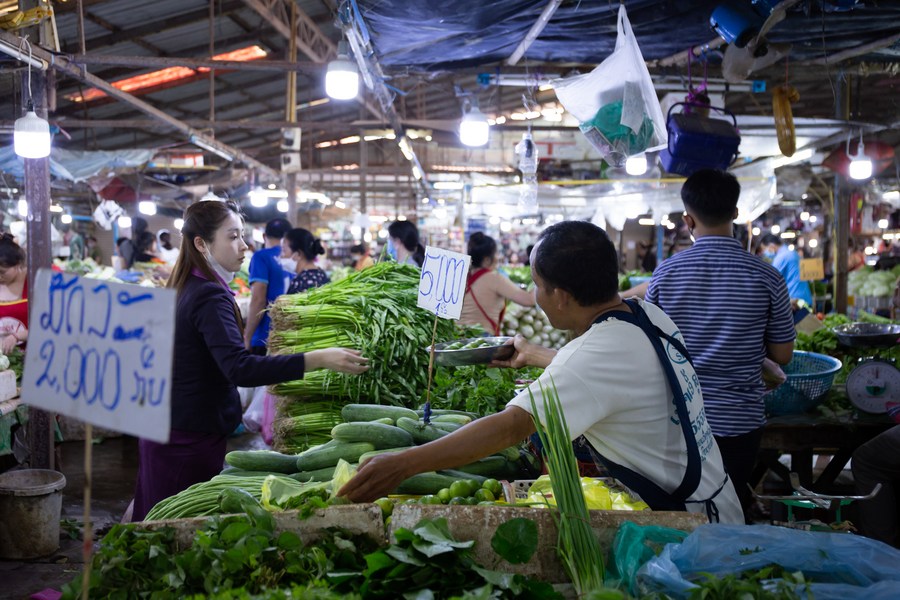
Photo taken on June 9, 2022 shows a market in Vientiane, Laos. (Photo by Kaikeo Saiyasane/Xinhua)
Goods and commodities in Laos saw a spike in prices due to high demand during the Lao New Year celebration. Meanwhile, the continuing depreciation of the Lao kip is among the key factors driving inflation in the country.
In April, the highest price rises were recorded in the food and non-alcoholic beverage category, which surged by 52.21 percent year on year, followed by the medical care and medicines category at 42.55 percent.
The continuing depreciation of the kip is also ramping up pressure on importers. It is having a damaging effect on the Lao economy, driving up the price of products and creating more hardship for the poor.
A food vendor at a night market in Vientiane named Bounyord told Xinhua on Wednesday that she already raised the price of her products twice this year, due to increased ingredient costs.
It's not possible to keep the same price, when most of the ingredients are imported from neighboring countries, and prices are greatly influenced by exchange rates, she said.
"I believe money is everyone's main concern today because our living expenses are rising much faster than our incomes," she added.
While economic activity has recently picked up in Laos, the rising cost of living is having a widespread negative impact, with poorer families most severely affected, according to the latest report issued on the World Bank website on Monday.

A vendor waits for customers at a market in Vientiane, Laos on Jan. 9, 2023. (Photo by Tamon Huengmeexay/Xinhua)
The World Bank's latest survey, conducted from December 2022 to January 2023, covers access to food, employment, and the impact of inflation on households, family businesses, and farms.
Almost 90 percent of those surveyed were affected by inflation, with over half experiencing a significant impact. Inflation and currency depreciation were cited as the most pressing issues for the Lao government, according to the report.
Laos' central bank on Monday announced it will soon start selling savings bonds worth up to 2 trillion Lao kip (around 114 million U.S. dollars).
The sale of the bonds by the central bank is also aimed at enabling the public to invest in securities and earn a secure and sizable profit while supporting the government's monetary policy and efforts to stabilize the value of the kip.
In February, the Lao central bank announced the sale of bonds worth 1 trillion kip through seven commercial banks. In addition, the central bank's savings bonds worth 5 trillion kip were offered to individuals and legal entities residing in Laos in 2022.
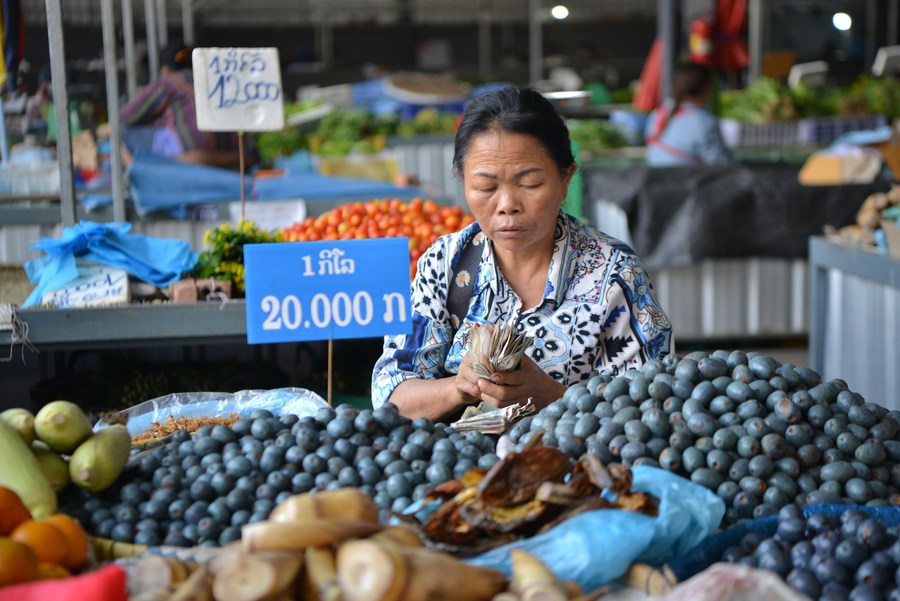
A vendor counts banknotes at a market in Vientiane, Laos on Jan. 9, 2023. (Photo by Tamon Huengmeexay/Xinhua)
Inflation in Laos has increased significantly since the beginning of 2022, with rising prices continuing to inflict hardship on people struggling to earn a living.
Inflation in Laos climbed from 6.25 percent in January 2022 to 41.26 percent in February 2023.
The country's annual average inflation rate was 23 percent in 2022, jumping from 3.8 percent in 2021.
In December 2022, the National Assembly of Laos passed a draft of the 2023 monetary plan, vowing to lower the annual average inflation rate to a single-digit figure of 9 percent, down from the current two-digit figure.■

